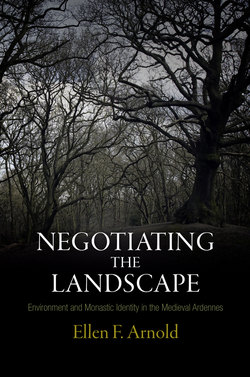Negotiating the Landscape

Реклама. ООО «ЛитРес», ИНН: 7719571260.
Оглавление
Ellen F. Arnold. Negotiating the Landscape
Отрывок из книги
Negotiating the Landscape
Ruth Mazo Karras, Series Editor
.....
Stavelot-Malmedy continued to acquire new lands and grow, and by the late 800s, Stavelot and Malmedy seem to have been relatively successful, prominent, and economically secure. Baix characterized the monks of the period as “tenacious,”70 but a crisis point was approaching. In the winter of 881, according to the Annales Fuldenses, Vikings attacked the monasteries of Stavelot, Malmedy, Prüm, and Inda, the palace in Aachen, and the cities of Cologne and Bonn. Regino of Prüm confirms the attack on Stavelot-Malmedy, and the Annales Stabulenses report that in 881, “the monastery of Stavelot is burned up by the fire of the Normans.” As a result of the attacks, “the body of St. Remacle was brought out of its tomb on 6 December.”71 The monks abandoned the monastery, taking Remacle’s relics with them. This led to a forced tour of monastic properties that allowed the monks to remind the residents of the broader region of the presence and miraculous powers of St. Remacle.
Whether or not there was any substantial damage done to the monasteries by the Vikings, the cultural, political, and religious impact of the attacks was wider reaching and longer lasting than the loss of buildings and treasure alone could possibly have been. The attacks encouraged the monks to rebuild infrastructure, to promote themselves in order to find new benefactors and defenders, and to consolidate both their administrative and religious records. They also triggered a flurry of hagiographical writing, most particularly the second book of the Miracula Remacli (hereafter Miracula), a collection of almost forty miracle stories that were pivotally important in the preservation of the houses’ religious memory and in setting religious and behavioral models for later monks, patrons, and dependents. The tales range from the curing of the ill and possessed to the preservation of the monks against nature and the elements and the punishment of those who (like the Vikings) chose to attack rather than support the houses and their mission.
.....